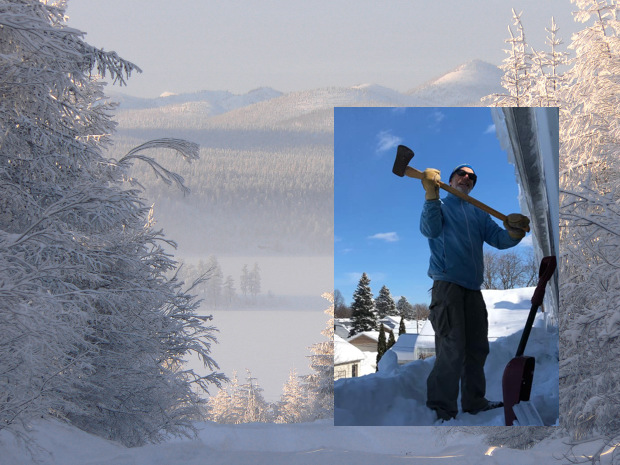NOVEMBER 13, 2020 – To distract myself further from the news, yesterday evening I watched the 2001 German film, As Far as My Feet Will Carry Me. It’s based on an allegedly true story, later fully debunked, about a German POW sentenced to 25 years in a post-World War II gulag prison camp on the Chukchi Peninsula facing Alaska’s Seward Peninsula. After several years of hard labor, he escapes and for three years travels through hell and high water 8,000 miles/13,114 km to Iran, then back to Germany. Although the story’s improbability affects its credibility, there are, actually, well-documented accounts of a number of Polish and German gulag prisoners escaping from eastern Siberian labor camps and traveling overland as far as India and Iran (thence back to Europe).
True or not, the story makes for a decent movie, with its obscure settings and characters from the post-war Soviet Union. One fault, however, shared with all movies featuring cold-weather scenes, is that the filmmakers hadn’t a clue about how cold “cold” is. Bitter winds blow blinding snow, but often hats and gloves (let alone mittens) are an after-thought. Also, as a bearded fellow, I can tell you that after 10 minutes at 10F below, my beard is heavy with frost and icicles. It’s not a sprinkled with eight “snowfakes” as appeared on the beard of the actor-prisoner five days out in the horizonless Siberian expanse in the dead of winter.
The film did include some excellent close-ups of detailed maps (consulted by the prison camp commandant obsessed with finding the escapee). This feature prompted me to pull out our own industrial-gauge National Geographic atlas. Soon I was in . . . another world, scouring a full-blown map of Siberia. By the time I’d crossed the Urals and continued west to Moscow, the latter seemed next door to Paris.
This cartographical experience led me to our den shelves laden with books about Russia—collected decades ago during my “Russian Phase.” One old book caught my attention: The Icon and The Axe / An Interpretive History of Russian Culture by James Billington, a Princeton scholar. Like everything else Russian, the work is dense and ponderous—597 pages, with a 25-page bibliography and 161 pages of reference notes; all in small print. I must have acquired it at Half-Price Books, since a bookmark from the store was tucked deep inside the volume.
As I thumbed through the contents, I remembered that the book had looked like an interesting idea until I’d became lost somewhere in the forest of its preface. Ever since, “icon and axe” had collected dust on the den shelf.
Aided by time and patience I must have lacked 40 years ago, I feasted on the luxuriant work of Professor Billington. I savored each information-packed sentence, often re-reading for better comprehension and retention. With focused curiosity I was soon on a 12,068-verst (one Russian verst = .6629 miles; 1.067 km) trek into the heart of Mother Russia.
Winter’s coming to Mother Minnesota? Bring it on!
(Remember to subscribe to this blog and receive notifications of new posts by email.)
© 2020 by Eric Nilsson
